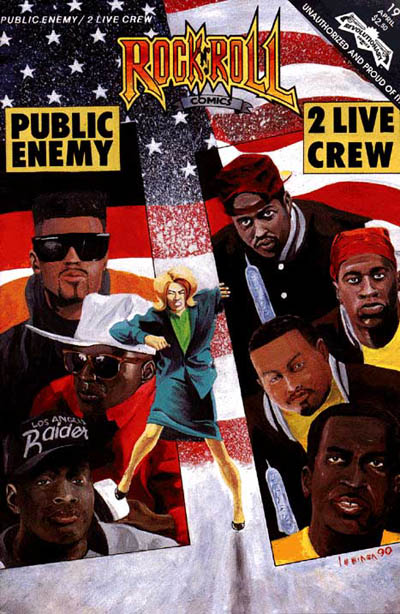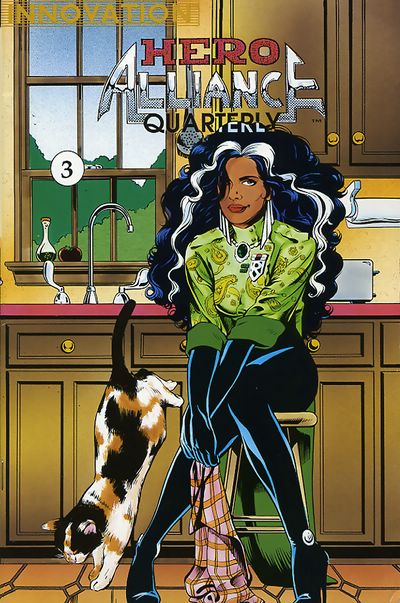 With the publication of Fear Itself #1, people now more than ever are discovering the talents of Stuart Immonen. For the past few years he's risen through the ranks at Marvel Comics and become one of the publisher's keystone artists. And unlike many artists out there, he is both an artist's artist and someone fans — and sales — get behind as well. And it doesn't hurt that he can keep up the pace of drawing a monthly book monthly.
With the publication of Fear Itself #1, people now more than ever are discovering the talents of Stuart Immonen. For the past few years he's risen through the ranks at Marvel Comics and become one of the publisher's keystone artists. And unlike many artists out there, he is both an artist's artist and someone fans — and sales — get behind as well. And it doesn't hurt that he can keep up the pace of drawing a monthly book monthly.
But although people might think he's come onto the scene in the past few years, he's been working diligently in comics since 1988, and has a storied career that's seem him work at virtually all of the major publishing houses, and has managed to find a balance between working on company-owned characters for the likes of DC and Marvel as well as doing his own personal projects. This week, we're going to delve into the history and bibliography of Stuart Immonen to see what it took for him to reach the heights of Fear Itself and what he might be doing next.
 Stuart Immonen's name first showed up in comics in the pages of a self-published "punk rock murdery mystery" called Playground that he did in 1988 with then-girlfriend Kathryn Kuder. Immonen and Kuder also spearheaded an anthology for local Toronto comic creators called Headcheese. Three issues into Playground, indie publisher Caliber took notice and published a fourth and final issue 1990. Although Immonen largely left behind independent comics in the 90s, he rediscovered his passion years later which we'll talk about later this week.
Stuart Immonen's name first showed up in comics in the pages of a self-published "punk rock murdery mystery" called Playground that he did in 1988 with then-girlfriend Kathryn Kuder. Immonen and Kuder also spearheaded an anthology for local Toronto comic creators called Headcheese. Three issues into Playground, indie publisher Caliber took notice and published a fourth and final issue 1990. Although Immonen largely left behind independent comics in the 90s, he rediscovered his passion years later which we'll talk about later this week.
 At the same time Caliber took notice, so did defunct music publisher Revolutionary (think Bluewater for music bio comics), where Immonen drew several features in their Rock 'N Roll Comics series including stories documenting the New Kids on the Block, 2 Live Crew and even Tipper Gore's campaign for music ratings. Immonen also did two issues of a series called Nut Runners for Rip-Off Press, as well as comic adaptation of Stephen King's Lawnmower Man that was shelved — and remains so to this day.
At the same time Caliber took notice, so did defunct music publisher Revolutionary (think Bluewater for music bio comics), where Immonen drew several features in their Rock 'N Roll Comics series including stories documenting the New Kids on the Block, 2 Live Crew and even Tipper Gore's campaign for music ratings. Immonen also did two issues of a series called Nut Runners for Rip-Off Press, as well as comic adaptation of Stephen King's Lawnmower Man that was shelved — and remains so to this day.
His first stab at superhero work came in the pages of Hero Alliance Special and Hero Alliance Quarterly published by Innovation. Although rather adult in nature compared to comics at the time, it gave Immonen a steady run to show his skill for Marvel and DC and also gave him to work with future animation superstar Shane Glines who inked his work.
In just under four years, Immonen went from a college grad to a working comics professional — and although the pay may not have been spectacular, he showed alot of dedication to comics very early on in his career with back-to-back projects for these companies without sacrificing quality or the style he was developing.
Jumping around from musician biographies to licensed comics and super-heroes gave Immonen a diverse background and portfolio that made both Marvel and DC take notice in 1992, which we'll talk about tomorrow.
Here's a selection of images from Stuart's earliest years in comics. Come back tomorrow as we document his debut at Marvel and DC.
Cover Immonen illustrated for Rock 'N' Roll Comics #36 (October 1991)

Uncolored full drawing for Hero Alliance Quarterly #3 (March 1992)

First page of 2 Live Crew story from Rock 'N' Roll Comics #19 (April 1991)

The following is a sequence from Hero Alliance Quarterly #4 (Summer 1992).
(Note the inclusion of the framed artwork on the top right of page two.)


Check out the rest of Immonen Week:
Day 2: Big Two Beginnings
Day 3: Seeing Superman in Red & Blue
Day 4: We Have Ignition!
Day 5: The Two Sides of Stuart Immonen


Thanks for this feature! Ive been loving Immonen for the last couple of years and after listening to John interview him on Word Balloon, I cant wait to kind out more about his career.
One thing though…Tipper Gore…fuck Tipper Gore.
NSFW? Who cares.
WHHHHHHHHHHHHAAAAAAAT?! That is the most ballsy display I have ever seen older American comics take.
save picture as…
wow